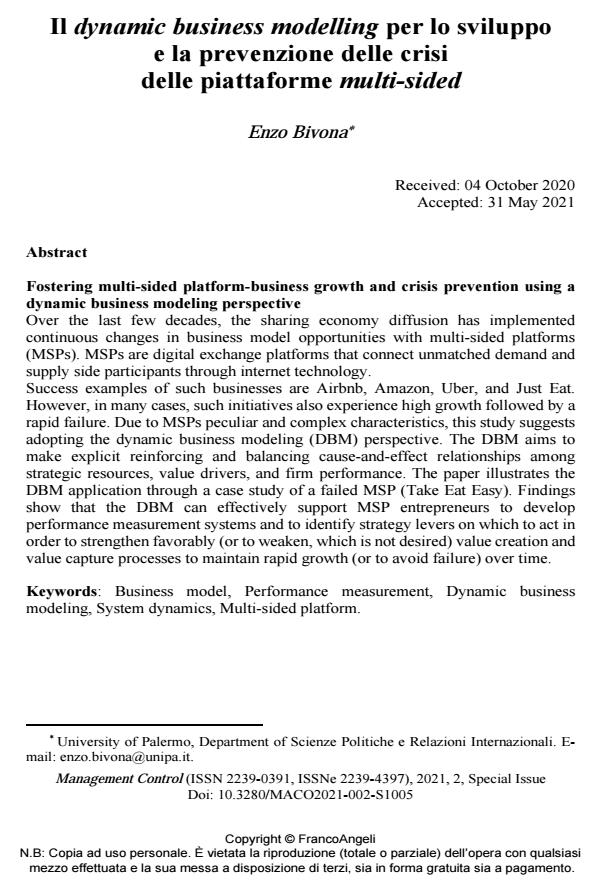Il dynamic business modelling per lo sviluppo e la prevenzione delle crisi delle piattaforme multi-sided
Titolo Rivista MANAGEMENT CONTROL
Autori/Curatori Enzo Bivona
Anno di pubblicazione 2021 Fascicolo 2021/suppl. 2
Lingua Italiano Numero pagine 23 P. 91-113 Dimensione file 458 KB
DOI 10.3280/MACO2021-002-S1005
Il DOI è il codice a barre della proprietà intellettuale: per saperne di più
clicca qui
Qui sotto puoi vedere in anteprima la prima pagina di questo articolo.
Se questo articolo ti interessa, lo puoi acquistare (e scaricare in formato pdf) seguendo le facili indicazioni per acquistare il download credit. Acquista Download Credits per scaricare questo Articolo in formato PDF

FrancoAngeli è membro della Publishers International Linking Association, Inc (PILA)associazione indipendente e non profit per facilitare (attraverso i servizi tecnologici implementati da CrossRef.org) l’accesso degli studiosi ai contenuti digitali nelle pubblicazioni professionali e scientifiche
Over the last few decades, the sharing economy diffusion has implemented continuous changes in business model opportunities with multi-sided platforms (MSPs). MSPs are digital exchange platforms that connect unmatched demand and supply side participants through internet technology. Success examples of such businesses are Airbnb, Amazon, Uber, and Just Eat. However, in many cases, such initiatives also experience high growth followed by a rapid failure. Due to MSPs peculiar and complex characteristics, this study suggests adopting the dynamic business modeling (DBM) perspective. The DBM aims to make explicit reinforcing and balancing cause-and-effect relationships among strategic resources, value drivers, and firm performance. The paper illustrates the DBM application through a case study of a failed MSP (Take Eat Easy). Findings show that the DBM can effectively support MSP entrepreneurs to develop performance measurement systems and to identify strategy levers on which to act in order to strengthen favorably (or to weaken, which is not desired) value creation and value capture processes to maintain rapid growth (or to avoid failure) over time.
Parole chiave:Business model, Performance measurement, Dynamic business modeling, System dynamics, Multi-sided platform
Enzo Bivona, Il dynamic business modelling per lo sviluppo e la prevenzione delle crisi delle piattaforme multi-sided in "MANAGEMENT CONTROL" suppl. 2/2021, pp 91-113, DOI: 10.3280/MACO2021-002-S1005